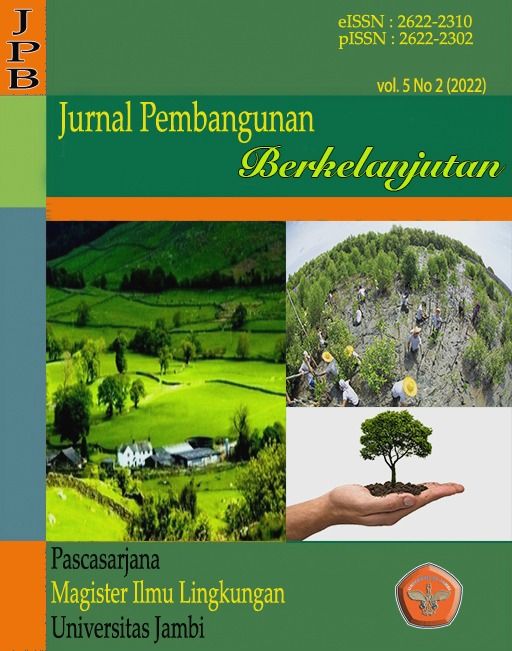Processing Mixture Of Polyethylene Terephthalate (PET) Plastic Waste and Oil Palm Empty Fruit Bunches by The Cracking Method
PENGOLAHAN CAMPURAN SAMPAH PLASTIK POLYETYLENE TEREPHTHALATE (PET) DAN TANDAN KOSONG KELAPA SAWIT DENGAN METODE PERENGKAHAN
DOI:
https://doi.org/10.22437/jpb.v5i2.19852Keywords:
Catalytic cracking, polyethylene terephthalate, plastic waste, biomassAbstract
The composition of waste in Jambi City is dominated by plantation waste and plastic waste, if not managed properly, it can have a negative impact on the environment. There is a need for alternatives to processing plastic waste and plantation waste, one of which is the catalytic cracking process to produce alternative fuels. The catalyst used is petroleum refining industry waste that can be reused. This study aims to analyze the characteristics of FCC (Fluid Catalytic Cracking) catalysts and the effect of the ratio of Polyethylene Terephthalate (PET) plastic waste and Oil Palm Empty Fruit Bunches (OPEFB) on the percentage of products produced. The experimental design used in this study was a Complete Randomized Design (RAL) with variations in the ratio of PET plastic : oil palm empty fruit bunches, namely 1:0, 1:1, 1:2, and 1:3 at a temperature of 450°C and a time of 40 minutes. The results of the analysis showed that spent FCC catalysts were predicted to contain zeolite Y (rich in silica) which had a pore structure of different sizes, while the ratio of PET plastic waste and oil palm empty fruit bunches had a significant effect on the percentage of cracking liquid, charcoal, and gas. The 1:3 ratio treatment resulted in the highest percentage of cracking oil and charcoal at 27.85% and 34.41%. While the percentage of gas was the highest in the 1:0 treatment, which was 82.12%.
Keywords: catalytic cracking, polyethylene terephthalate, plastic waste, biomass, empty bunches of palm oil, catalyst spent FCC
Downloads
Downloads
Published
How to Cite
Issue
Section
License
Copyright (c) 2022 Jurnal Pembangunan Berkelanjutan

This work is licensed under a Creative Commons Attribution 4.0 International License.
1. Authors retain copyright and grant the journal right of first publication with the work simultaneously licensed under a Creative Commons Attribution 4.0 International License that allows others to share the work with an acknowledgement of the work's authorship and initial publication in this journal.
2. Authors are able to enter into separate, additional contractual arrangements for the non-exclusive distribution of the journal's published version of the work (e.g., post it to an institutional repository or publish it in a book), with an acknowledgement of its initial publication in this journal.
3. Authors are permitted and encouraged to post their work online (e.g., in institutional repositories or on their website) prior to and during the submission process, as it can lead to productive exchanges, as well as earlier and greater citation of published work (The Effect of Open Access)











